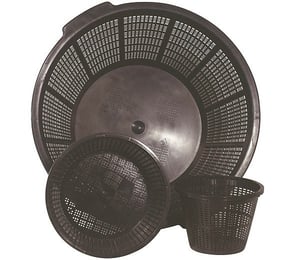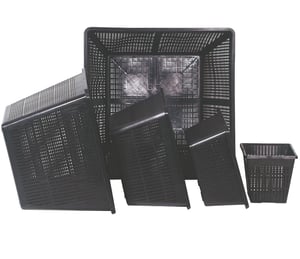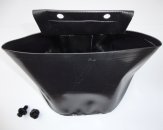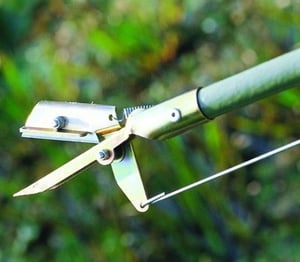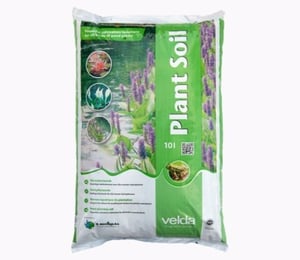Guide to Pond Plants
This guide by Dan Everton will help you to understand pond plants better and to be able to make an informed choice when you decide to add them into your pond.
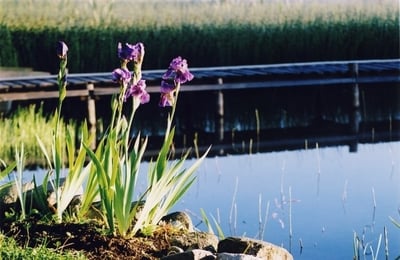
This guide by Dan Everton will help you to understand pond plants better and to be able to make an informed choice when you decide to add them into your pond.

Plants are a great way to make a pond look much more attractive and natural, they’re also beneficial too. They also help maintain the balance of the pond, absorbing nutrients which would otherwise feed algae causing green water to form or blanket weed to grow.
Pond plants also reduce some of the light which penetrates the water and promotes algae blooming,and they also give your fish shelter so that they feel less threatened and give them a place for spawning too.
Before you make a final decision I would advise you to research the plants you like the look of, as you don’t want to buy them and then find they’re not suitable for your pond. Find out as much information about the plants as you can.
Many plants will have labels which give you the planting depth, maximum growing height and little information on the plant too. They should also show a picture of how the plants look when they’re thriving.
Always use aquatic compost, as general garden compost contains high concentrations of fast releasing fertiliser, this could kill your fish and other aquatic life.
Aquatic compost has a better texture for being in the water and also contains slow-release fertiliser, the plants will use this fertiliser fast enough for it not to be released into the water and pollute the pond.
The use of a pond basket allows for the aquatic soil to be kept in the right place, surrounding your plants. They are much easier to plant up and maintain than you would think too.
Read my guide How to Plant Aquatic Pond Baskets for more information.
It’s important to know the difference between the types of pond plants that exist and the positions that they are suitable to be kept in. Some plants prefer to be right in the depths of your pond, however, others need to be kept near the surface on your pond.
Marginal pond plants are positioned on the edge of your pond, just slightly underwater, or in shallow water.
They will flower during the warmer seasons which will add beautiful colours, Mimulus is an example of a fast growing and fast spreading marginal which flowers too.
Taller varieties such as Iris should, of course, be positioned at the back of the pond, otherwise, they’re going to spoil your view. Give these taller plants larger baskets to prevent them falling over in high winds.
Wide spreading plants like Mimulus need a wider basket but it doesn’t need to be deep, a shallow but wide basket will be fine.
Arguably the most stunning of all pond plants are water lilies, with their huge beautiful flowers, they also give your pond lots of shade with their large pads. As they can be located at the bottom of the deep parts of your pond they will add interest to an area which would otherwise be bare.
After you’ve bought your water lily I would advise you to replant it into a larger basket to give it space to grow, following the same procedure as my guide which is linked above. I’d also strongly recommend that you feed your lily with a water lily feed as they need lots of nutrition to survive and thrive.
When adding a lily to a pond it’s vital that you gradually lower it’s depth over time rather than dropping it straight into the deepest point. I also advise that lilies are not added to a koi pond unless there are stones large enough to prevent the koi from digging the aquatic compost out.
Possibly the most common sight in all ponds and aquariums around the UK are oxygenating plants, sometimes called oxygenating weed.
Oxygenating plants such as Water Crow's Foot, Cottonbud Rush, Mare's Tail and Water Violet will add vital oxygen to your pond in the daytime, however during the hours of darkness they let carbon dioxide back in - so too much can be a bad thing.
These potted oxygenators are relatively inexpensive and can be grown with little effort and they use up nutrients which algae would otherwise use, so they have lots of uses in a pond. Due to their fairly quick growing rate, you may need to thin out occasionally but you can always give them to your friends and family who have aquariums or ponds. If not then I’d advise that you add it to your compost pile.
We sell our oxygenators as potted plants so they are quick and easy to install into your pond.
Varieties such as Water Chestnut, Water Soldiers and Water Lettuce are floating pond plants, they’re a quick way to add shading and beauty to your pond and require very low maintenance.
They will spread during the very hot weather and with Water Chestnuts, you may be lucky enough to see them flower (if we have consistently hot weather) but during the colder weather they will die off as they are from warmer climates such as Africa.
You could try to protect these plants during the winter by keeping them in a greenhouse but even this may not be enough, unfortunately.
See our range of pond plants, planting baskets, aquatic compost and more on our Pond Plants and Planting page.
Shop Now £0.99
Shop Now £0.99
Shop Now £6.99
Shop Now £24.99
Shop Now £24.99
Shop Now £16.99
Shop Now £24.99
Shop Now £6.79



